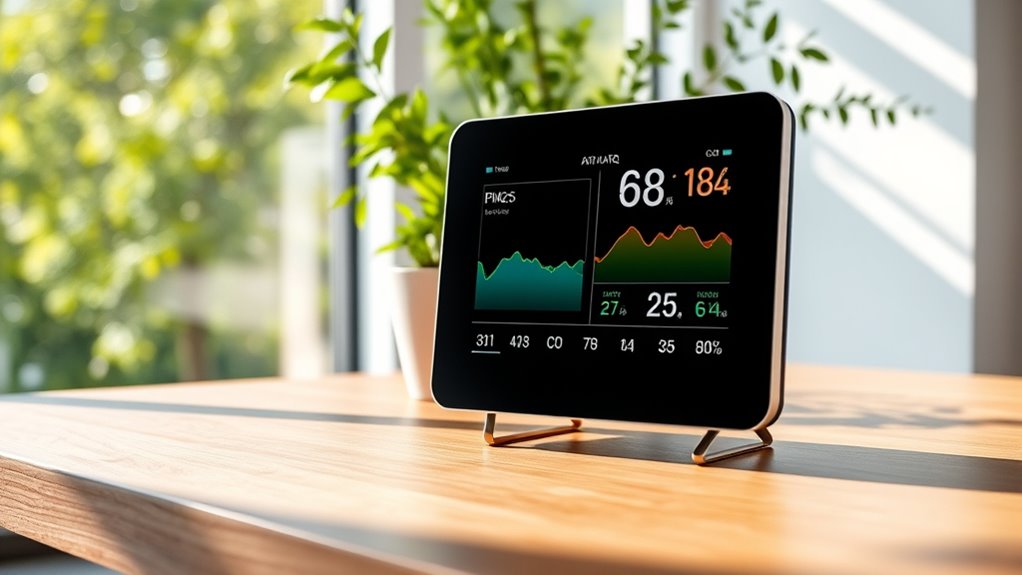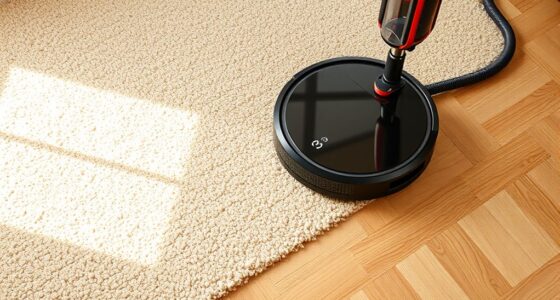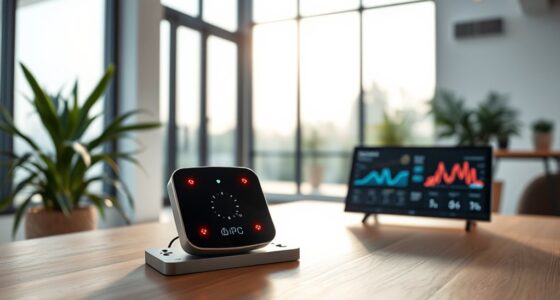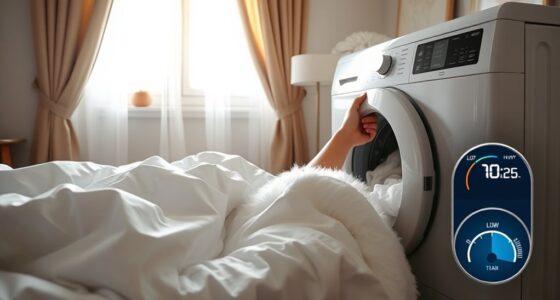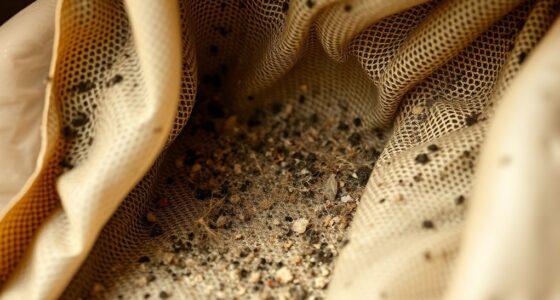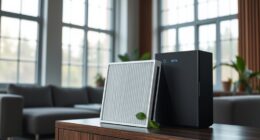To accurately interpret IAQ data from your monitor, guarantee it’s properly calibrated and maintained regularly. Check that sensors are clean, and compare readings to known standards to catch any drift. Use this information to identify pollutants and decide if ventilation, filtration, or other actions are needed. Proper calibration guarantees trustworthy data, so your decisions about improving air quality are effective. Keep exploring further to discover tips on optimizing your air quality monitoring system.
Key Takeaways
- Regularly calibrate sensors to ensure accurate readings and reliable interpretation of IAQ data.
- Understand pollutant thresholds and air quality indices to assess health risks effectively.
- Use trend analysis over time to identify worsening conditions and determine necessary actions.
- Address sensor issues promptly through maintenance and recalibration to prevent inaccurate data influence.
- Implement appropriate interventions, such as ventilation or air purifiers, based on monitored IAQ levels for healthier environments.

Have you ever wondered how clean the air around you really is? When you rely on air quality monitors to provide that answer, it’s crucial to understand how they work and how to interpret their data effectively. One critical aspect of ensuring accurate readings is sensor calibration. Over time, sensors can drift from their original settings, leading to inaccurate measurements. Regular sensor calibration becomes essential to maintain data accuracy, so you get a true picture of your environment. If the sensors aren’t properly calibrated, the monitor might report falsely low or high pollutant levels, giving you a misleading impression of your indoor or outdoor air quality. This can prevent you from taking necessary actions to improve air conditions or cause unnecessary concern. Proper calibration involves adjusting the sensor outputs to match known standards, which can be done periodically according to the manufacturer’s guidelines or after any maintenance. This step guarantees that the data you rely on is precise, making your decisions more effective. Additionally, understanding the importance of sensor calibration and data accuracy empowers you to troubleshoot issues when readings seem inconsistent. For example, if a monitor suddenly shows a spike in particulate matter but there’s no obvious source, calibration might be needed, or the sensor could be dirty or malfunctioning. Regular checks and calibration ensure that your monitor continues to deliver reliable information. Remember, high-quality sensors and proper calibration routines are investments in your health and well-being, helping you create safer indoor environments or respond appropriately to outdoor pollution. By paying attention to these technical details, you turn your air quality monitor from a simple gadget into a trusted tool that guides smarter decisions, keeping the air you breathe cleaner and healthier every day. Self Watering Plant Pots
Frequently Asked Questions
How Often Should I Calibrate My Air Quality Monitor?
You should calibrate your air quality monitor at least once every six months to guarantee accurate sensor calibration. Regular maintenance frequency helps maintain reliable readings, especially if you use the monitor in environments with fluctuating pollutants or high humidity. Check the manufacturer’s recommendations, as some sensors might need more frequent calibration. Consistent calibration ensures your IAQ data remains precise, allowing you to take informed actions to improve your indoor air quality.
Can Air Quality Monitors Detect All Indoor Pollutants?
Air quality monitors can’t detect all indoor pollutants because of sensor limitations and varying detection capabilities. While they effectively identify common pollutants like VOCs, particulate matter, and carbon dioxide, some chemicals or gases may go unnoticed. You should be aware of these limitations and consider supplementing your monitor with specialized equipment if you need thorough pollutant detection. Regular calibration helps ensure accurate readings, but understand that no device is perfect.
What Is the Lifespan of Typical IAQ Sensors?
Sensor longevity varies, but typically, IAQ sensors last about 2 to 5 years. You should anticipate regular replacement or calibration to maintain accuracy. Keep an eye on your device’s performance, as declining sensitivity signals it’s time for a new sensor. By understanding replacement frequency and monitoring sensor health, you ensure reliable data, helping you make informed decisions to improve your indoor air quality and protect your health.
Are There Portable Air Quality Monitors Suitable for Outdoor Use?
Yes, there are portable sensors designed for outdoor monitoring. These devices are compact, rugged, and built to withstand weather conditions, making them perfect for outdoor air quality assessments. You can easily carry them around to monitor pollution levels, pollen, or other airborne particles in different locations. With portable sensors, you get real-time data, helping you make informed decisions about outdoor activities or environmental concerns.
How Does Humidity Affect IAQ Data Accuracy?
Humidity interference can substantially impact sensor accuracy in your air quality monitor. When humidity levels are high, it may cause false readings or skew data, making it harder to interpret IAQ accurately. To ensure reliable results, you should regularly check humidity levels and consider using monitors with built-in humidity compensation. This helps maintain sensor accuracy and provides a clearer picture of your indoor air quality conditions.
Conclusion
Now that you understand how to interpret your air quality monitor’s data, you hold the key to a refreshing gust. Think of your monitor as a vigilant guardian, revealing hidden pollutants lurking in your space. By taking action on its insights, you’re clearing away the fog of uncertainty, transforming your environment into a sanctuary of clean, crisp air. Breathe easy knowing you’re the captain steering your indoor world toward health and harmony.
